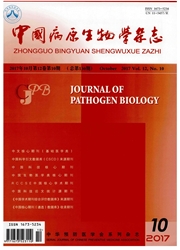

 中文摘要:
中文摘要:
目的探讨红细胞免疫相关表面分子CD35、CD59与疟疾感染的相关性。方法运用流式细胞术对桂西地区少数民族人群587例(年龄20~75岁,平均年龄43.2岁)曾经感染或者正在感染疟疾的患者和560例(年龄20~72岁,平均年龄44.8岁)非易感成年人的红细胞表面分子CD35、CD59表达水平进行检测,并作统计学分析。结果疟疾易感者和非易感者红细胞CD35、CD59平均荧光强度比较差异有统计学意义(P〈0.001),疟疾易感者红细胞CD35、CD59分子的平均荧光强度均低于非易感者。结论红细胞表面分子CD35、CD59与疟疾感染有着较为密切的联系,其具体作用机制有待进一步研究。
 英文摘要:
英文摘要:
Objective To explore the association between surface molecules on red blood cells such as CD35 and CD59 and the minority population in the Guixi area infected with malaria. Methods Flow cytometry was used to analyze CD35 and CD59 molecules on red blood cells in 587 individuals (ages 20--75, mean: 43.2 years) who were members of an eth nic minority and who were infected with malaria and 560 uninfected controls (20 72, mean: 44.8 years) from the Guixi area. The mean fluorescent intensity (MFI) of expression was determined for the two groups. Results Analyses of CD35 and CD59 molecules on red blood cells showed that uninfected controls had a significantly higher MFI of CD35 and CD59 than did individuals infected with malaria. Conclusion CD35 and CD59 molecules on red blood cells are closely associated with malaria infection, and the mechanism of this association must be studied further.
 同期刊论文项目
同期刊论文项目
 同项目期刊论文
同项目期刊论文
 期刊信息
期刊信息
